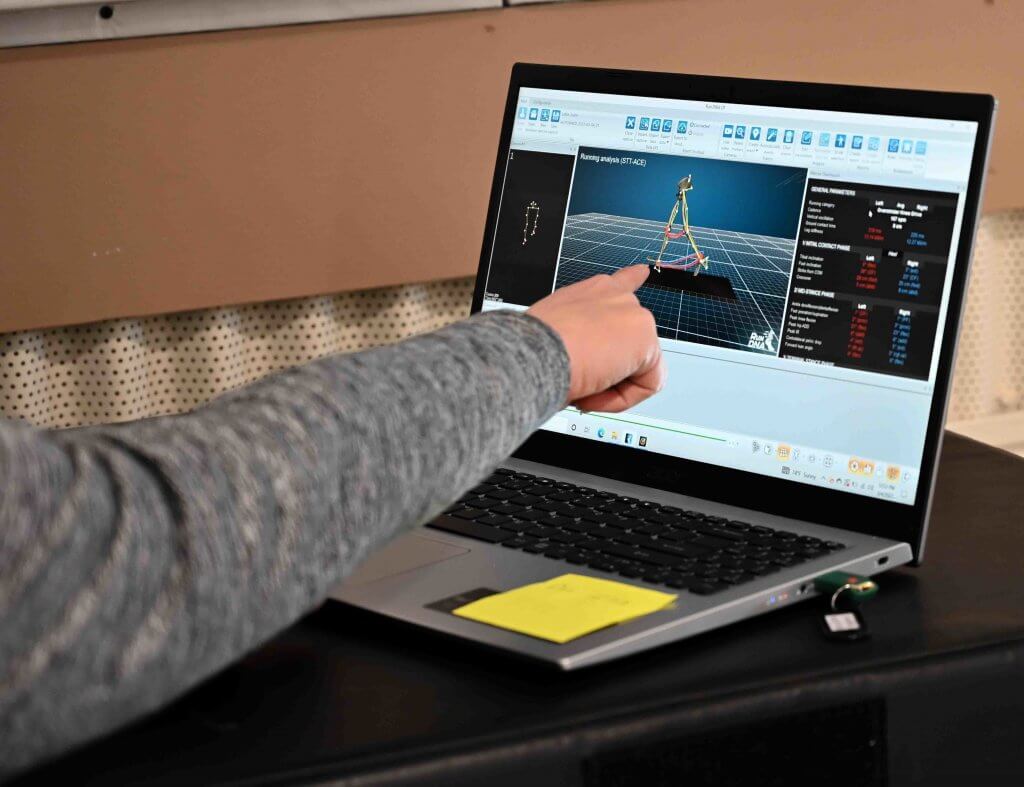By acquiring cutting-edge fitness technology, one Air National Guard unit has taken strides to improve running and prevent injury among its airmen.
The 173rd Fighter Wing of the Oregon Air National Guard recently debuted RunDNA – a gait-analysis program designed to give users a 3D view of his or her running stride – as part of an ARCWERX pilot program. The comprehensive analysis of each runner’s unique gait shows every detail from cadence to pronation to stride length, identifying areas of improvement and making adjustments.
“Health, wellness and fitness are a huge part of military life,” said Senior Master Sgt. Jennifer Shira, public affairs superintendent for the 173rd Fighter Wing. “In the past, we’ve seen people struggle or injure themselves trying to get ready for their physical assessment. We wanted to find a way to prepare the body for the run portion in a way that is safe, effective and a lifestyle change as opposed to panicked preparation that often leads to injury. That led us to look into RunDNA.”
Users are hooked up to leads from the neck down and run on a treadmill, allowing the program evaluate a runner’s stride and provide the 3D assessment for review. Runner can then isolate areas for improvement and receive a personalized training program to correct discrepancies. RunDNA also comes with an app to log workouts and keep track of progress.
RELATED: Tennessee’s D1 Training helps guardsmen get ACFT ready
Jennifer Hall, health promotion coordinator for the Health Education Awareness Team (HEAT), was instrumental in bringing the program to the unit, and has been pleased with the results and feedback received over the first two months of the program’s implementation.
“Airmen are amazed to watch themselves run when we replay the capture,” Hall said. “It’s common that gate distortions or cadence issues we can see on the computer screen fall in alignment with pain or injuries that the airman is experiencing. They often leave with a desire to work on their running form to prevent future injury and improve their running performance.”
The 173rd was part of the RunDNA pilot program that consisted of 100 airmen who utilized the gait-analysis technology and running improvement plans over the course of 12 weeks. On average, the airmen slashed 90 seconds off of their mile-and-a-half run time.
RunDNA founder Doug Adams explained the importance and relevance of his technology to the military.
“Everyone in the military has to run,” Adams said, “and there is no one correct way to run, but there are lots of incorrect ways to run. Airmen really appreciate the individualization of the RunDNA running improvement strategy because it is tailor made to address their specific needs.”
Maj. Bobby Carbonell, the ARCWERX Education Lead who helped set up the initial pilot program, said he has high hopes for the future of the RunDNA technology in the Air Force.
“What immediately stood out to me about RunDNA is that it provided highly accurate gait analysis results and could be operated by anyone who could attend a few days of training,” Carbonell said. “Ultimately, we’d like to see the program be rolled out across the Air Force so every airman has the tools that they need to maintain a healthier lifestyle, improve their physical fitness, and avoid injuries.”
More information about RunDNA can be found on its website.

